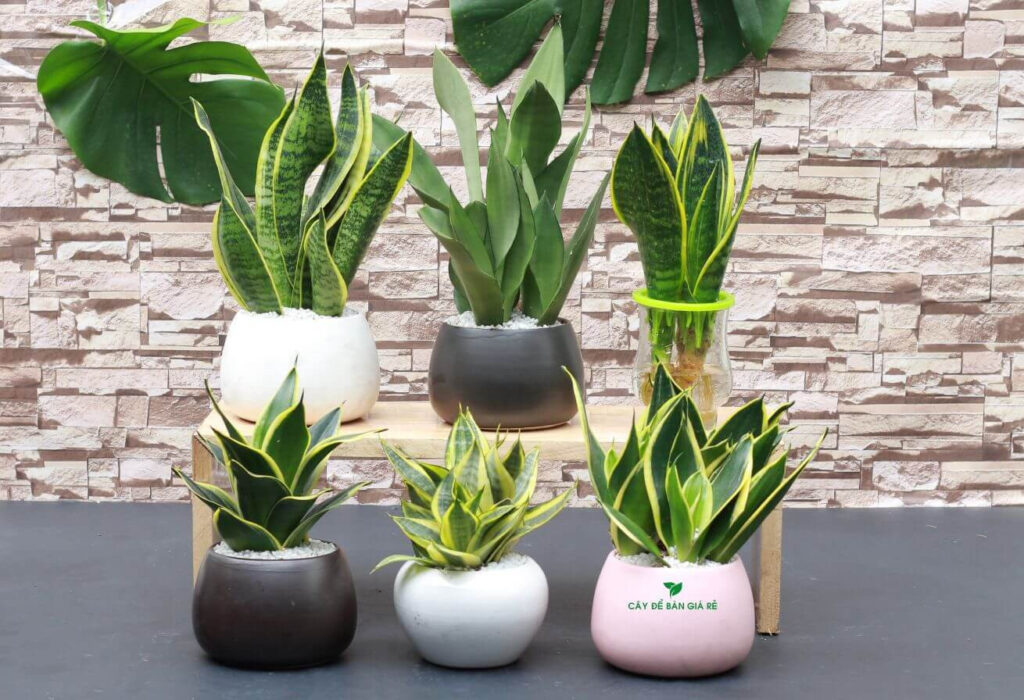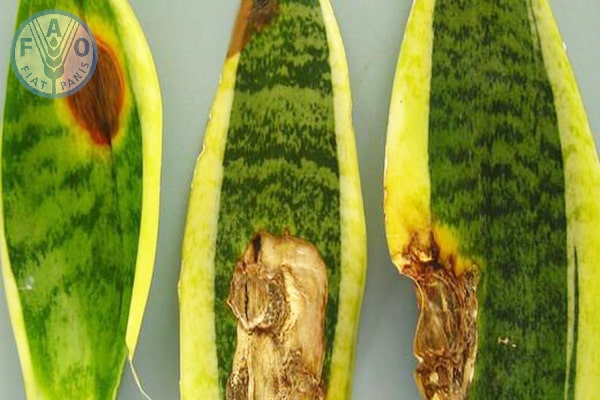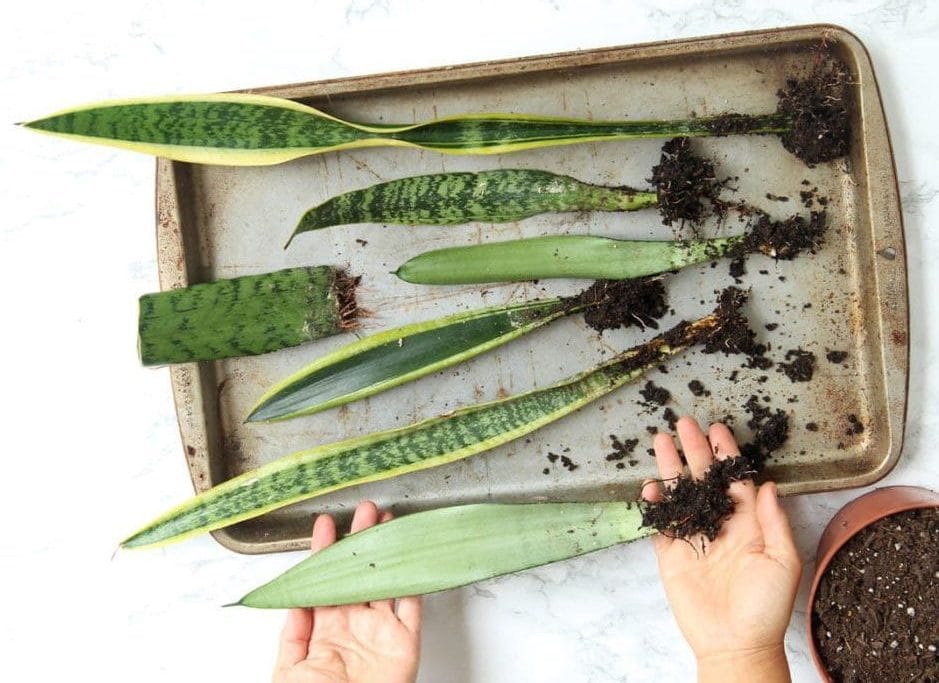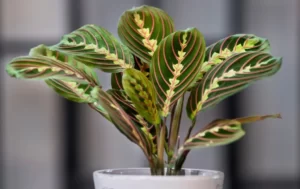The snake plant, scientifically known as Sansevieria, is a prominent member of the Asparagaceae family, which is renowned for its unique ornamental value and remarkable adaptability to various indoor conditions.
The genus Sansevieria comprises approximately 70 different species, many of which exhibit unique morphological features, making them a fascinating subject of botanical studies. This plant is widely known by its common name, the snake plant, due to the elongated, upright leaves with patterned scales that resemble the skin of a snake.
Characteristics of Snake Plants
| Characteristic | Description |
|---|---|
| Family | Asparagaceae |
| Genus | Sansevieria |
| Common Name | Snake Plant |
| Native Region | Tropical West Africa, specifically Nigeria and Congo |
| Growth Habit | Upright, with stiff, sword-like leaves |
| Leaf Color | Typically green, with variations in pattern and color depending on the species |
| Leaf Size | Can range from a few inches to over 3 feet in height |
| Light Requirement | Can survive in a wide range of light conditions, from low light to full sun, prefers indirect light |
| Water Requirement | Tolerant of a variety of watering regimes, but prefers to dry out between watering |
| Soil Requirement | Can grow in a wide variety of soil types, prefers well-draining soil |
| Propagation | Typically propagated through division of rhizomes |
| Air Purification | Known to remove toxins like formaldehyde, xylene, and toluene from the air |
| Special Features | Resilient, drought-tolerant, and low-maintenance; popular for indoor use due to its ability to thrive in a variety of environmental conditions |
| Cultural Significance | Associated with luck and protection in various cultural traditions |
The genus Sansevieria, commonly referred to as snake plants, encompasses a group of perennial plants renowned for their distinctive aesthetic and remarkable resilience. These plants, originating from tropical and subtropical regions of Europe, Africa, and Asia, have garnered attention within both horticultural and scientific communities for their multifaceted benefits and ease of care.
Foremost, snake plants are characterized by their striking, sword-like leaves, which exhibit a wide array of patterns ranging from solid green to variegated forms with edges of gold or white. This versatility in leaf morphology not only contributes to their aesthetic appeal but also reflects their adaptability to a variety of environmental conditions. The architectural form of snake plants, with leaves that may grow upright and reach several feet in height, offers a sculptural element to interior spaces, thereby enhancing the visual dynamics of indoor environments.
From an ecological and care perspective, snake plants are remarkably tolerant of a range of growing conditions, which contributes to their popularity among both novice and experienced gardeners. They thrive in conditions of low light and require minimal watering, aligning with their natural adaptation to arid climates. This drought resistance is a physiological adaptation to their native habitats, where water is sporadically available. Consequently, snake plants are often cited as exemplary specimens for xeriscaping and sustainable gardening practices within water-scarce regions.
Furthermore, snake plants are lauded for their air-purifying capabilities, a characteristic that has gained prominence following research initiatives such as NASA’s Clean Air Study. These plants have demonstrated a capacity to absorb pollutants such as benzene, formaldehyde, xylene, and toluene, thereby ameliorating indoor air quality. This attribute, coupled with their ability to release oxygen predominantly at night, positions snake plants as advantageous for improving ambient air quality in living and working spaces.
In terms of propagation, snake plants are easily reproduced through division or leaf cuttings, facilitating their dissemination and cultivation. This ease of propagation ensures that enthusiasts can readily share and expand their collections, fostering a community of cultivation and appreciation for these plants.
Despite their hardiness, it is imperative to acknowledge that snake plants do have their vulnerabilities, particularly regarding overwatering. The plant’s succulent leaves store water, making them susceptible to rot if exposed to excessive moisture. Thus, ensuring well-draining soil and sparse watering schedules is paramount to their care.
8 Most Popular Types of Snake Plants
Within the diverse genus Sansevieria, a myriad of species and varieties have captivated both the horticultural community and indoor plant enthusiasts alike. Among these, eight types of snake plants stand out for their unique characteristics and widespread popularity.
1. Sansevieria trifasciata ‘Laurentii’
Distinguished by its striking, yellow-edged leaves, the ‘Laurentii’ is perhaps the most recognizable variety. Its tall, green leaves are bordered with a golden yellow, making it a vibrant addition to any space. Its robust nature and tolerance for low light conditions make it a favored choice for indoor environments.
2. Sansevieria trifasciata ‘Hahnii’
Also known as the Bird’s Nest Snake Plant, ‘Hahnii’ presents a more compact form, with leaves that grow outward in a rosette pattern, resembling a bird’s nest. This variety’s smaller stature makes it ideal for tabletops or as a ground cover in indoor plant arrangements.
3. Sansevieria cylindrica
Uniquely, this variety boasts cylindrical leaves that can grow several feet in length. The leaves often have a braided appearance, a result of cultivation practices, adding a distinctive sculptural element. Its tolerance for varying light conditions and minimal water requirements underscore its appeal.
4. Sansevieria kirkii ‘Pulchra’
Prized for its patterned leaves, which display a mix of silver, green, and dark green spots and stripes, ‘Pulchra’ is a testament to the visual diversity within Sansevieria. Its leaves are wider and can curl slightly, offering a unique texture and form.
5. Sansevieria trifasciata ‘Futura Robusta’
This variety is noted for its robust, compact growth and dark green leaves with light green cross-hatching. It is slightly smaller than the traditional ‘Laurentii’, making it suitable for spaces where a more compact plant is desired.
6. Sansevieria ehrenbergii ‘Samurai’
Known as the Samurai Snake Plant, this variety features short, thick leaves that grow in an upward fashion, reminiscent of a samurai’s sword. Its striking form and ease of care make it a unique and low-maintenance choice for indoor gardeners.
7. Sansevieria zeylanica
With its long, dark green leaves that are marked with lighter green bands, the Zeylanica variety is both elegant and resilient. It shares similar air-purifying properties with other members of its genus, making it a functional as well as a decorative plant choice.
8. Sansevieria masoniana ‘Whale Fin’
Characterized by its wide, paddle-like leaves, the ‘Whale Fin’ can grow to impressive sizes, making a bold statement in any interior. Its singular, large leaf emerges directly from the soil, creating a minimalist yet striking visual impact.
These eight varieties of snake plants exemplify the versatility and diversity of the Sansevieria genus. Each brings its own unique aesthetic to indoor spaces, while sharing a common ease of care that makes them accessible to a wide range of plant enthusiasts. Their ability to improve air quality, coupled with their adaptability to various light and water conditions, further cements their popularity and enduring appeal.
Symbolic Meaning of Snake Plant in Feng Shui
In the realm of Feng Shui, an ancient Chinese practice aimed at harmonizing individuals with their surrounding environment, the snake plant holds significant symbolic meaning. This plant, with its upright, sword-shaped leaves, is not only valued for its aesthetic appeal and air-purifying qualities but also for its potent symbolic representation within the Feng Shui tradition.
- Chinese culture: The snake plant is often associated with the Eight Gods in Chinese culture, who are believed to bestow their virtues – including prosperity, beauty and long life – on those who grow the plant. Due to this belief, snake plants are often placed in auspicious areas in homes and businesses to attract good luck and fortune. In the context of Feng Shui, the upright growth of the snake plant’s leaves symbolizes the upward movement of Chi, promoting a flow of positive energy. Snake plant’s ability to purify the air is also seen as enhancing health and wellbeing.
- African culture: In the African spiritual tradition of Vodun, the snake plant is linked to the deities that govern protection and defense. It is often used in protective rituals and is considered a powerful tool for warding off evil.
- Brazilian culture: Known as “Espada de São Jorge” or “Sword of Saint George” in Brazil, the snake plant is often used in rituals to ward off the “evil eye” and protect the home from negative energies. The plant’s sword-like leaves are believed to cut through negative energy, bringing protection to its surroundings.
- Japanese culture: In Japan, the snake plant is known as “Tiger’s Tail”. Like the tiger, which is considered the king of beasts, the snake plant is considered powerful and is thought to bring protective, good luck energy to the home.
The snake plant is often associated with positive energy and protective qualities, drawing a parallel to its physical characteristics. Its strong, upward-growing leaves are believed to embody the Feng Shui principle of upward growth, symbolizing a rise in positive energy, prosperity, and protection. This connection underscores the belief that incorporating snake plants into the home can foster an environment conducive to growth and safeguarding against negative influences.
One of the key symbolic meanings of the snake plant in Feng Shui is its association with the wood element. According to Feng Shui principles, the wood element represents growth, vitality, and renewal. The snake plant’s resilient nature and its ability to thrive in various conditions mirror these qualities, making it a potent symbol for resilience and adaptability in the face of challenges.
Furthermore, the snake plant is often lauded for its ability to purify the air by removing toxins, a characteristic that aligns with the Feng Shui emphasis on creating a clean and harmonious environment. This purification process is symbolic of removing negativity or stagnant energy from one’s surroundings, thereby promoting a flow of positive energy and well-being.
Placement of the snake plant within the home is also considered crucial in Feng Shui practice. It is commonly recommended to place snake plants in areas that require a protective energy or a boost in positive chi, such as near the entrance of the home. This placement not only serves to welcome positive energy but also to shield the home from negative external influences. Additionally, placing a snake plant in the home office or workspace can symbolize ambition and growth, encouraging productivity and success.
The snake plant is, thus, more than an ornamental indoor plant. Its symbolic meanings in different cultures and its application in Feng Shui make it a powerful tool in creating harmonious and balanced indoor spaces.
Benefits of Having a Snake Plant in Your Home
The inclusion of the snake plant within the domestic sphere extends beyond mere decorative appeal, offering a multitude of benefits that enhance both the physical environment and the well-being of its inhabitants. This resilient and aesthetically versatile plant is celebrated not only for its striking appearance but also for its significant contributions to indoor air quality, psychological well-being, and overall health.
Firstly, the snake plant is renowned for its air-purifying capabilities. It is among a select group of plants identified in NASA’s Clean Air Study as effective in removing toxic pollutants from indoor environments. Specifically, it can absorb carbon monoxide, formaldehyde, benzene, xylene, and toluene, converting them into harmless substances. Moreover, unlike most plants, the snake plant continues to produce oxygen and filter the air during the night, making it an ideal plant for bedroom placement to enhance air quality and promote better sleep quality.
Furthermore, the aesthetic versatility of the snake plant contributes significantly to its popularity. With its upright, variegated leaves that come in a variety of shapes and sizes, it can complement any interior design scheme, adding a touch of greenery and vitality to living spaces. This visual appeal plays a crucial role in enhancing the psychological well-being of home occupants, as studies have shown that the presence of plants in indoor environments can reduce stress, improve mood, and increase feelings of well-being and productivity.
Another compelling benefit of having a snake plant in the home is its low maintenance nature. This plant thrives on neglect, requiring minimal watering, and is resilient to varying light conditions, from low light to direct sunlight. This adaptability makes it an excellent choice for both seasoned gardeners and those new to plant care, ensuring its survival and growth even under less-than-ideal care conditions.
The snake plant also contributes to the humidity of indoor environments. By releasing moisture into the air through the process of transpiration, it can help maintain optimal humidity levels, which is beneficial for respiratory health, skin health, and the overall comfort of the home environment. This aspect is particularly valuable in areas or seasons where indoor air tends to become dry.
In addition to its environmental and aesthetic benefits, the snake plant is believed to possess positive symbolic meanings and Feng Shui benefits, such as promoting energy, purity, and protection. While these aspects may vary according to individual beliefs, they add an additional layer of value to the inclusion of snake plants in home settings.
How to Use Snake Plant to Attract Luck and Wealth
In the principles of Feng Shui, the placement of objects and plants within a space can have a significant impact on the flow of Chi, or energy, and subsequently influence various aspects of life, including prosperity and wealth. The snake plant with its upright, sword-like leaves, is often used in Feng Shui practices to attract luck and prosperity.
- Entrance placement: Positioning a snake plant near the entrance of your home or office can help attract positive energy and good luck. The upward growth of its leaves is believed to invite and direct positive energy into spaces, promoting a prosperous environment.
- Eastern and southeastern sectors: In the Bagua, or Feng Shui energy map of a home, the East is associated with family health and the Southeast with wealth and abundance. Placing a snake plant in these areas of your home can potentially enhance these aspects of your life.
- Office placement: Placing a snake plant in your office or workspace, particularly in the southeastern corner, can invite wealth and prosperity while also promoting a productive work environment.
- Pairing with other elements: Pair the snake plant with other Feng Shui elements such as water or symbols of wealth. A water feature or wealth symbols like coins or gold ornaments placed near the plant can enhance the wealth-attracting power of snake plant.
- Well-maintained plant: Ensure that your snake plant is healthy and well-maintained. Dead or dying leaves should be trimmed regularly, and the plant should be watered and cared for properly. A thriving plant is said to attract more positive energy.
- Intent and mindfulness: When placing your snake plant, it can be beneficial to do so with a clear intent for attracting wealth and luck. This mindfulness can potentially enhance the effectiveness of the plant in channeling positive energy into your home or workspace.
LotusBuddhas also note you that, while Feng Shui provides guidelines for attracting positive energy, it does not guarantee results and should ideally be paired with a positive mindset and actions directed toward achieving wealth and prosperity.
Common Problems of Snake Plant
Despite its hardiness, the Snake Plant is not immune to problems. By understanding the common issues these plants face, one can ensure their Snake Plant thrives, showcasing its striking foliage and contributing to a healthier indoor environment.
1. Overwatering: The most prevalent issue with Snake Plants is overwatering. Sansevierias prefer dry conditions, mirroring their native arid environments. Excess water can lead to root rot, a condition where the roots start to decay, hindering the plant’s ability to absorb nutrients and water. Indicators of overwatering include yellowing leaves, a mushy base, and a foul odor emanating from the pot. To prevent this, water only when the soil is completely dry, and ensure your pot has adequate drainage.
2. Underwatering: While Snake Plants are drought-tolerant, prolonged neglect can lead to underwatering problems. Symptoms of an underwatered Snake Plant include dry, curling leaves, and a lackluster appearance. While they can recover from a lack of water better than from overwatering, consistency in watering schedule, allowing the soil to dry out completely between waterings, ensures optimal growth.
3. Light Issues: Snake Plants are versatile in their light requirements; they can thrive in low light conditions but prefer bright, indirect sunlight. Too much direct sunlight can scorch their leaves, leaving unsightly brown spots. Conversely, insufficient light can lead to leggy growth as the plant stretches towards the light source. For balanced growth, place your Snake Plant in a spot that receives a good amount of indirect sunlight throughout the day.
4. Pest Infestations: Although not frequently plagued by pests, Snake Plants can sometimes fall victim to spider mites, mealybugs, and gnats, especially if kept in too moist conditions. These pests can cause damage by sucking sap from the leaves, leading to weakened plants and potential disease transmission. Regular inspection and maintaining a clean environment can prevent infestations. If pests are detected, treat the plant with neem oil or insecticidal soap.
5. Temperature Stress: Snake Plants prefer a stable temperature range between 55°F (13°C) and 85°F (29°C). They are not frost-tolerant and can be damaged by temperatures below 50°F (10°C). Signs of temperature stress include drooping or discolored leaves. To avoid this, keep your Snake Plant away from drafty windows or heating and cooling vents.
6. Nutrient Issues: While not heavy feeders, Snake Plants can suffer from nutrient deficiencies or excesses if not fertilized correctly. Yellowing leaves or stunted growth can indicate a lack of essential nutrients. Conversely, too much fertilizer can lead to salt build-up in the soil, harming the roots. Using a balanced, water-soluble fertilizer diluted to half strength during the growing season can help avoid these issues.
While the Snake Plant is undemandly robust, paying attention to its basic needs regarding watering, light, temperature, and nutrition will prevent most common problems. Regular inspection for pests and diseases, coupled with proper care practices, will ensure your Snake Plant remains a vibrant and healthy addition to your space.
How to Care Snake Plant When Growing Indoors
Caring for a Snake Plant (Sansevieria) indoors is a rewarding experience, thanks to its striking appearance and air-purifying qualities. These resilient plants are well-suited for indoor life, thriving with minimal care. However, to ensure your Snake Plant not only survives but flourishes, there are several care aspects to consider.
1. Lighting: Snake Plants are remarkably adaptable to different lighting conditions. They prefer bright, indirect light but can also tolerate low light levels, making them ideal for indoor environments. A spot near a window that receives filtered sunlight is perfect. Avoid placing your Snake Plant in direct sunlight for extended periods, as this can cause the leaves to scorch.
2. Watering: Overwatering is the Achilles’ heel of the otherwise sturdy Snake Plant. These plants have succulent leaves that store water, allowing them to withstand drought. Water your Snake Plant sparingly, allowing the soil to dry out completely between waterings. In winter, reduce watering frequency even further, as the plant enters a dormant phase and requires less water. This strategy helps prevent root rot, a common issue stemming from excessive moisture.
3. Soil and Potting: Good drainage is crucial for Snake Plants. Use a well-draining potting mix, ideally formulated for succulents or cacti, to ensure excess water can escape easily. The pot itself should have drainage holes at the bottom. When repotting, choose a container only slightly larger than the current one, as too much space can lead to excess soil moisture.
4. Temperature and Humidity: Sansevierias prefer warm conditions and do well in typical indoor temperatures ranging from 60°F to 80°F (15°C to 26°C). They can tolerate fluctuations but should be protected from drafts and extreme cold, which can damage the leaves. Humidity is generally not an issue for these hardy plants; they can thrive in the dry air found in most homes. However, avoid placing them near heating vents, as this can overly dry the air and potentially harm the plant.
5. Feeding: Snake Plants require minimal fertilization. Feeding them once during the spring with a balanced, water-soluble fertilizer is sufficient for the year. Over-fertilization can lead to poor growth and should be avoided. Remember, when it comes to feeding your Snake Plant, less is more.
6. Cleaning and Maintenance: To keep your Snake Plant looking its best, occasionally wipe the leaves with a damp cloth to remove dust. This not only keeps the plant clean but also allows it to photosynthesize more efficiently. Prune any brown or damaged leaves at the base to encourage new growth and maintain a tidy appearance.
7. Pests and Problems: Snake Plants are resistant to most pests and diseases, but keep an eye out for signs of trouble, such as wilting, spotting on the leaves, or pests like spider mites. Most issues can be prevented or treated with proper care, such as ensuring adequate drainage and avoiding overwatering.
How to Propagate Your Snake Plants
Propagating Snake Plants is a straightforward and gratifying process that enables gardeners to multiply their collection or share with friends. These resilient plants can be propagated through several methods, including division, leaf cuttings, and rhizome cuttings. Each method has its nuances, but all are rooted in the plant’s incredible ability to regenerate. Here’s how to propagate your Snake Plants successfully.
1. Division: The simplest way to propagate Snake Plants is by division. This method involves separating the plant into smaller sections, each with its roots. It’s best done when repotting, which should occur every couple of years or when the plant outgrows its pot.
- How to Divide: Remove the plant from its pot and gently shake off the excess soil to reveal the roots. Identify natural divisions where the plant can be separated into smaller plants. Using a clean, sharp knife, cut through the roots to separate the sections. Ensure each new plant has a good portion of roots attached.
- Aftercare: Pot each division in fresh, well-draining soil, and water lightly. Place the pots in bright, indirect light and resume normal care once signs of growth appear.
2. Leaf Cuttings: Propagating Snake Plants from leaf cuttings involves cutting a leaf into sections and rooting them to form new plants. This method takes longer but is a fantastic way to save a damaged leaf or to produce multiple plants from a single leaf.
- How to Propagate via Leaf Cuttings: Choose a healthy, full-grown leaf and cut it into segments, each about 2-3 inches long. Remember to mark the bottom end of each segment, as it’s crucial to plant them the same way they grew.
- Planting Cuttings: Allow the cuttings to callous over for a day or two. Then, plant them about an inch deep in a moist, well-draining potting mix, ensuring the bottom end is down. Keep the soil slightly moist and in bright, indirect light.
- Patience is Key: Rooting can take several months, and it may be even longer before you see new growth. Patience and minimal disturbance are essential during this period.
3. Rhizome Cuttings: Rhizomes are the horizontal stems from which the leaves grow, often found under the soil’s surface. Propagating from rhizome cuttings is a reliable way to produce new plants that are exact clones of the parent.
- How to Propagate via Rhizomes: Gently remove the plant from its pot to access the rhizomes. Using a clean, sharp knife, cut a piece of rhizome that has at least one growth point (bud).
- Planting Rhizomes: Plant the rhizome piece in well-draining soil, with the growth point just above the soil surface. Water lightly and place the pot in a warm, bright spot without direct sunlight.
- Growth Expectation: It may take a few weeks for new shoots to appear. Once they do, care for them as you would a mature Snake Plant.
General Tips for Success:
- Use clean, sharp tools to avoid infecting the plant with diseases.
- Ensure pots have good drainage to prevent root rot.
- Be patient, especially with leaf and rhizome cuttings, as Snake Plants take time to root and grow.
- Avoid overwatering newly propagated plants, as their root systems are initially fragile.
Snake Plant Toxicity
Snake plants are classified as mildly toxic due to the presence of saponins, a group of naturally occurring plant glycosides. When ingested, snake plants can cause gastrointestinal symptoms due to these saponins. Symptoms can range from mild to moderate and may include nausea, vomiting, diarrhea and salivation. In rare instances, dermatological symptoms like mild skin irritation can occur from prolonged skin exposure to the plant’s sap.
It is crucial to underscore that these symptoms are typically seen in pets and, less commonly, in children if they ingest parts of the plant. The toxicity is rarely severe but can cause discomfort. Dogs and cats are particularly susceptible.
If you suspect that your child or pet has ingested part of a snake plant, you must to contact a healthcare provider or veterinarian immediately to ensure appropriate care.
Despite their mild toxicity, snake plants remain a popular houseplant choice due to their low maintenance requirements and air-purifying abilities. However, they should be placed out of reach of young children and pets to avoid any potential ingestion. It’s always wise to consider the potential risks and ensure safe placement of houseplants in your home environment.
In conclusion, incorporate the captivating snake plant into your space, nurture it with care, and let its vibrant energy and symbolic significance contribute to the creation of a prosperous and harmonious environment. Embrace the wisdom of Feng Shui and harness the potential of this “money plant” to cultivate abundance in all aspects of your life.













